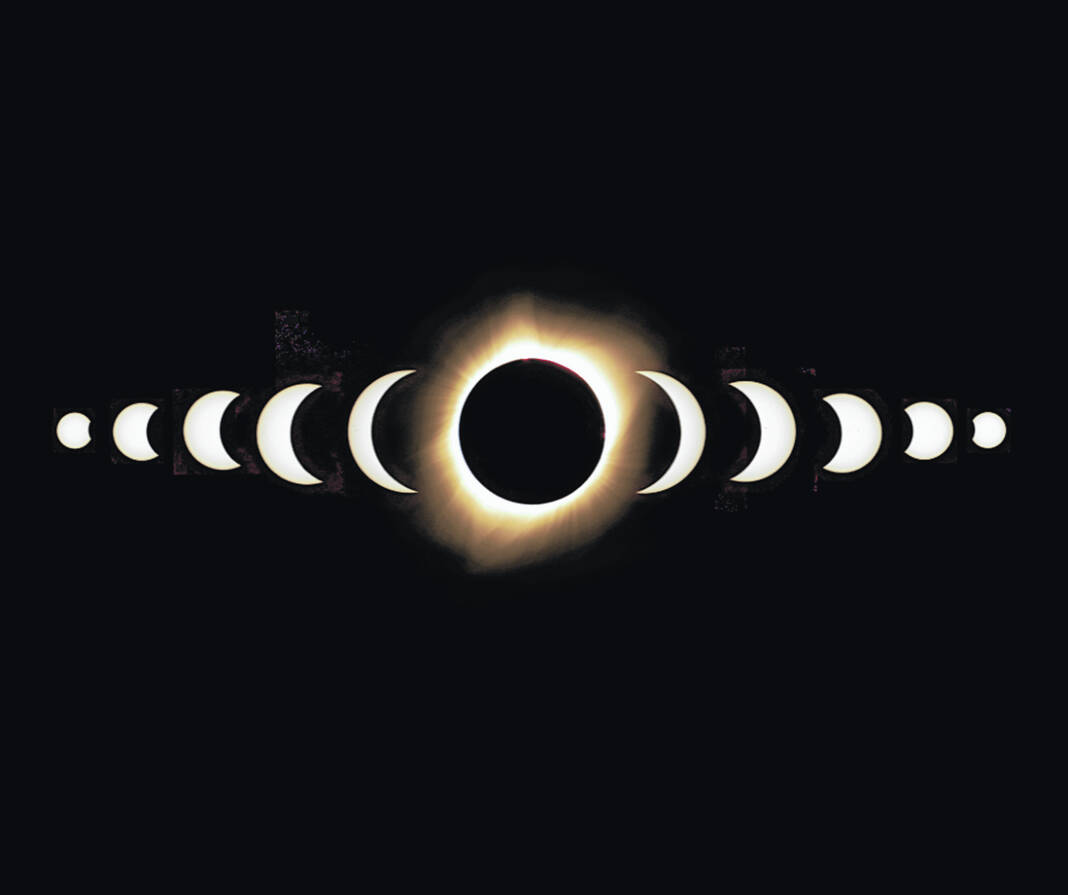
PREBLE COUNTY — Okay, so we know there’s going to be a total solar eclipse on Monday, April 8, and (barring any severe weather — we are in Ohio!) we are in the path of totality.
But what will actually occur? And how dark is it going to get when the moon completely blots out the sun that afternoon?
According to the Planetary Society, the eclipse will happen in phases in a way which will allow eclipse chasers — and your average watchers — to follow along as it happens.
The Planetary Society explains on its website:
“Starting at least an hour before totality (the exact time depends on your location), you can watch a partial eclipse as the moon slowly crosses in front of the sun. As seen through eclipse glasses or a solar filter-equipped viewer like a telescope or binoculars, the moon will take a larger and larger bite out of the sun.”
“As more and more of the sun gets eclipsed, you’ll notice some strange lighting effects. Normally, the edges of your shadow under the full sun are fuzzy. That’s because our big, round star generates light rays at an infinite number of angles. But as the sun gets eclipsed into a crescent, it behaves more like a glow stick, putting out light in a more uniform direction. Objects aligned to the axis of the Sun’s crescent will cast sharper shadows,” it continues.
Daylight will start to fade, and if April 8 is a sunny day, it will begin to look overcast as the moon blocks increasingly more of the sun.
You may also notice daylight starting to fade. What began as a bright, sunny day may start to appear overcast as the Moon blocks more and more sunlight.
Other effects scientists and the Planetary Society say to look for include possible shadow bands, (undulating shadows that are most easily seen on plain surfaces according to the PS) a few minutes before and after the total eclipse occurs. There are other lighting effects which might be seen, but we’ll leave you to research those over the next three months.
During totality, we will experience a brief twilight and sunset, and those solar eclipse safety glasses can be put away. It will be safe to view the sun at this point without them, according to officials. How dark it will be will depend on how close you are to the center of the path of totality — and Preble County is pretty close! If it’s a clear day, the horizon all around will glow like at sunset.
Once the moon has completely eclipsed the sun, the corona (the sun’s outer atmosphere) will emerge and be visible. We may be able to see stars, and the temperature will drop. Wildlife may begin their nighttime behavior, whether its preparing for sleep, or becoming active if they’re nocturnal.
After totality, everything that happened (beginning just after 1:52 p.m. if you’re in Eaton) will happen in reverse.
Want to learn more or watch a simulation of the 2024 total solar eclipse based on where you’ll be during it? Visit eclipse2024.org.
For information regarding local viewing parties and special events planned in Preble County communities, visit www.visitpreblecounty.org.

